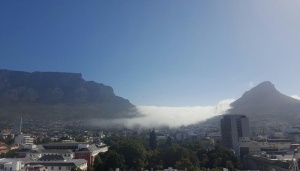Booming hotel sector in South Africa

South Africa saw revenue per available room (RevPAR) increase by 13.6 per cent for the first two months of this year, reaching ZAR542.07, according to the latest results from STR Global.
The provider of market data to the hotel industry tracks more than 40,400 rooms across the country.
The last four months showed double-digit improvements in occupancy and RevPAR following more muted performances after the country hosted the 2010 FIFA Football World Cup, which were driven by additional supply entering the destination and increasing competition.
South Africa’s major cities of Johannesburg (including Sandton) and Cape Town reported increasing RevPAR for the first two months of 2012 with 14.5 per cent (ZAR498.59) and 12.7 per cent (ZAR799.02) growth, respectively.
This followed a more challenging 2011 which saw declining RevPAR for the two markets, mainly led by decreasing average daily rates (ADR).
Johannesburg’s RevPAR dropped 23.4 per cent (ZAR475.45) and Cape Town’s RevPAR declined 7.7 per cent (ZAR568.17) for year-end 2011.
“Prior to the 2010 FIFA World Cup, both Johannesburg and Cape Town saw increased new supply, which put pressure on the market post-games and was reflected in the hotels’ performance”, said Elizabeth Randall, managing director of STR Global. “
“Hoteliers are now seeing growth in both rate and occupancy.
“This is good news, as improved demand since the second half of 2011 has led to increased RevPAR across South Africa. During the first two months of 2012, we have seen some of the major markets experiencing double digit RevPAR growth,” added Randall.
Looking at the two cities, particularly at the Luxury and Upper Upscale segments in more detail, it shows a stronger RevPAR growth for the Luxury and Upper Upscale hotels in Johannesburg, which are mainly based in Sandton.
While new supply has remained flat since June 2011, in these segments demand growth increased by 21.8 percent.
Benefiting from increased occupancy, RevPAR grew by 19.3 percent to ZAR789.56 year-to-date.
In Cape Town, increased occupancy and rate in the Luxury and Upper Upscale segments led RevPAR growth to increase by 13.8 percent (ZAR1338.44) YTD.
Minor changes in supply, as well as double-digit demand growth (+10.1 percent) YTD helped occupancy reach 70.0 percent (+10.5 per cent).

